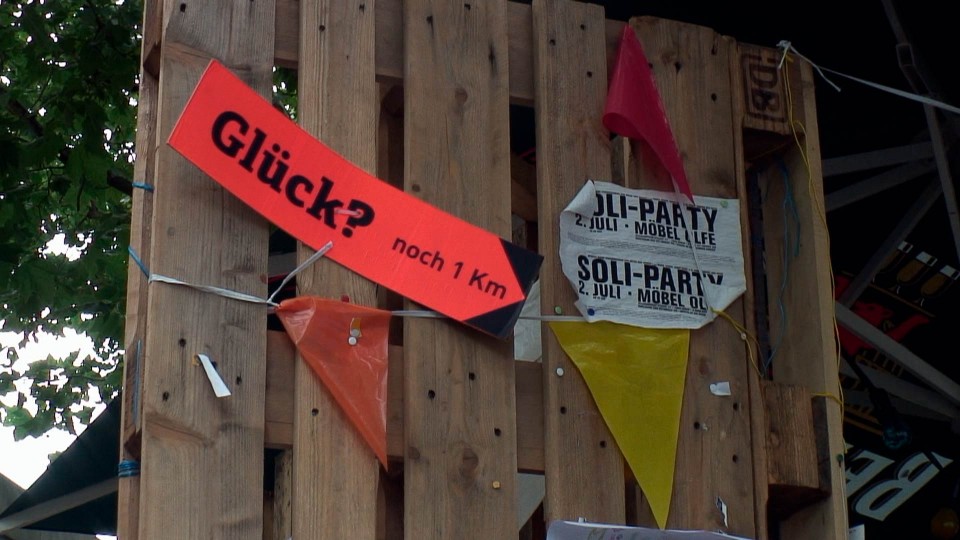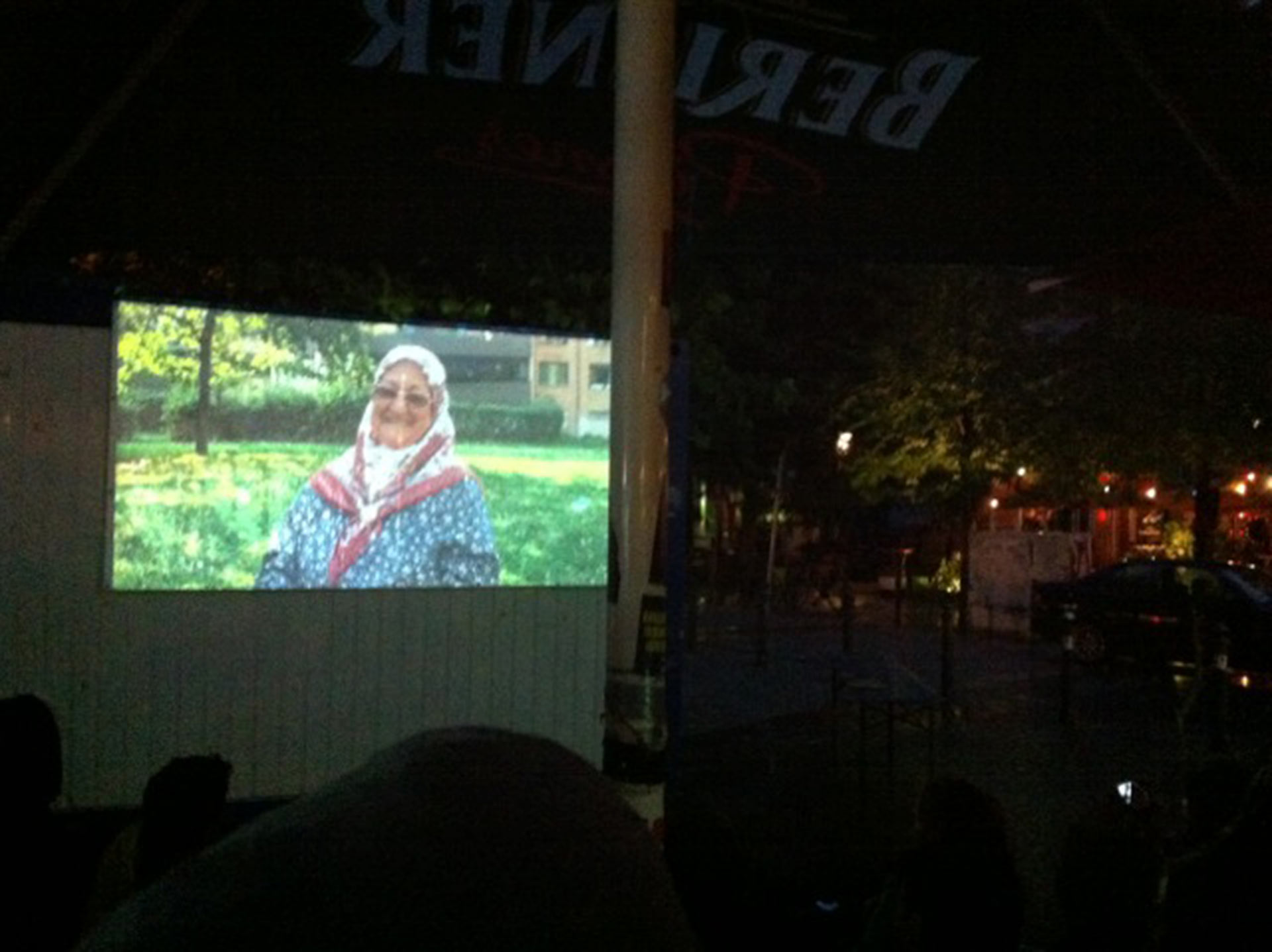Tamam Görüşürüz – Okay, see you
Year
2013
Country
Berlin
Germany
Technique
Video
Installation
Length
90′
A filmic research by Gülây Akın, Brigitta Kuster and Angelika Levi, 90min, Berlin 2013
10 conversations about life at Kotti today and in the past, about the history of immigration to Berlin, life as a migrant and co-existence.
How do people see themselves and each other, how do they see current changes? How do they describe their relationship to the urban space, to their neighbourhood, to the whole city, to the mainstream society and to he minority society?
In cooperation with Kotti und Co.
Global Prayers. redemption and liberation in the city.
Reflections on the filmic research of Angelika Levi, Gülây Akın and Brigitta Kuster as part of the rental policy campaign of Kotti & Co around the “Gecekondu” at the Kottbusser Tor in Berlin-Kreuzberg in cooperation with Global Prayers. Redemption and Liberation in the City. Some considerations following the research and public screening of “Tamam Görüşürüz – Okay, See You”, written down by Brigitta Kuster.
Who owns that? Acting between art, research and discussion / politics.
How do we continue to deal with this? We don’t want to keep our research video in our drawers. It doesn’t seem to make sense to feed the research results, especially in the context of the project, which may ultimately be strongly oriented towards exchange movements in the scientific landscape. So, in the end, the question is: For whom is our research in the way in which it is represented or articulated important? For whom does it allow something? In particular, the form on which we have worked – perhaps it could be called a filmic conversation sequence – is also about how those who are involved in it should be able to deal with the research results. Our approach here is quite a difficulty, indeed a malaise, as a researcher or author, which has accompanied us during the project, since we are somehow also moving between the chairs with the representation form or perhaps even better with the utilization form in the field of knowledge production: It is not an analysis of anonymous interviews, nor is it a finished film – and yet again, one cannot describe the result as between these two, more widely distributed, more disciplinarily normalized, and therefore more passable formats. If, as in our case, one proceeds from the strong presence of individual persons and their stories directly linked to themselves in the video, from a depersonalizing generalization, or specifying preceding transcripts corresponding to the conventions of anonymization, then acute questions arise again and perhaps also ‘new’, to whom the narrated stories belong, and how knowledge can be shared as a resource, if not as an understanding of knowledge.
Who is responsible for making a story important, who or what makes a story important?
Usually, a story is then important in a recorded time based medium, when those who tell it are not (anymore) present. Representation wins by absence. But if the digital film form is conceived of as less than a recording and storage medium, rather than as a materiality in which stories can be produced – as an “in limbo” of the finished story, as part of the narrative?
Such as “in limbo”, on the other hand, stands in a certain contradiction to research activity as work, as a practice, which must be legitimized against others.
This was also clearly evident in the bipolarization processes in the behaviour, views and interests of the public premiere of our film work on the square at Gecekondu, to local residents, activists in the close and wider surroundings of Kotti & Co, colleagues from our respective professional fields as well as the clients themselves, representatives of the research project Global Prayers.
It is undoubtedly a shared situation of the empowerment of participants who have so far never been able to use a public platform or a medium for their own articulation forms, and in this sense they are also close to a position such as that of subalterns. The cultural form of expression, which is placed at the disposition, is a substantial part of a political form of protest, and can undoubtedly arise only as such a part.
How can the knowledge be shared and the stories remain in the possession of the people who tell the stories?
Shared production rather than just creative commons
Distribution as a research result. And in the neighbourhood!
–
Booms, Blasen und das Latte-macchiato-Land by Katrin Fressler. [DE]
Kottiundco. [DE]
Global Prayers [EN]




